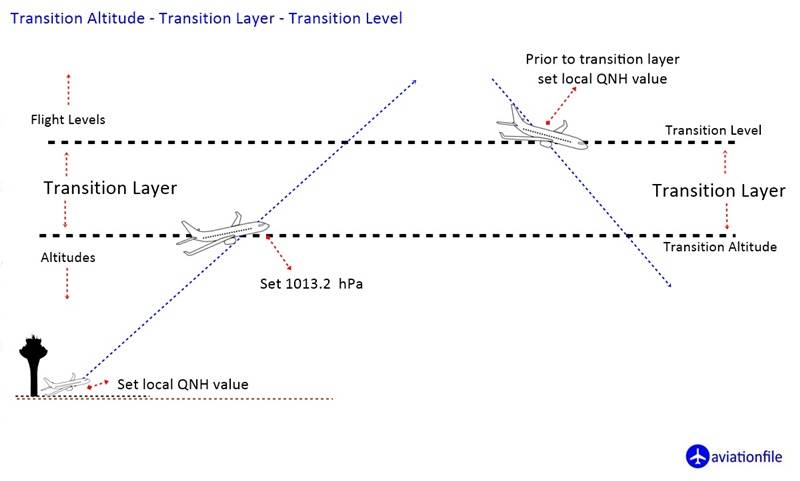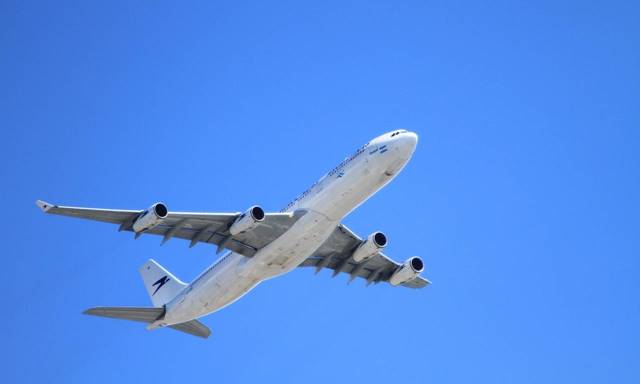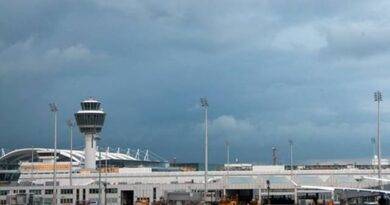Transition Altitude – Transititon Level – Transition Layer
For pilots navigating the vast expanse of airspace, understanding vertical references is crucial. Three key terms often intertwine in this context: transition altitude (TA), transition level (TL), and transition layer. Fear not, fellow aviators and curious earthbound souls, for this guide will unveil their mysteries and make your climb to knowledge smooth sailing!
Transition Altitude: Switching Gears
Imagine ascending through the clouds, leaving behind ground-based measurements. At a specific altitude, denoted by TA, a critical shift occurs. Below TA, your trusty altimeter references actual altitude above mean sea level (AMSL). But above TA, it transitions to flight levels (FL), using standard atmospheric pressure (1013.25 hPa) as the reference. This switch ensures consistent altitude readings across varying atmospheric conditions.
Transition Layer: A Brief Stopover
The space between TA and TL? That’s the transition layer, a no-man’s land for sustained flight. Pilots can only cross this zone, not linger, as they adjust their altimeter settings and reference points. Think of it as a quick pitstop to switch gears before accelerating into the world of flight levels.
Transition Level: Climbing the Pressure Ladder
Think of TL as the lowest rung on the flight level ladder. It’s always higher than TA and fluctuates based on local atmospheric pressure (QNH). This dynamic duo ensures safe vertical separation between aircraft using different reference points. Imagine two planes, one below TA using AMSL and another above using FL. TL guarantees they never get too close, even with changing pressure.
Transition Altitude. The altitude at or below which the vertical position of an aircraft is controlled by reference to altitudes.
Transition Layer. The airspace between the transition altitude and the transition level.
Transition Level. The lowest flight level available for use above the transition altitude.
(ICAO, e.g. Doc 4444: PANS-ATM & Doc 8168: PANS-OPS).

As you can see in the chart above. If aircraft are flying below the Transition Altitude during their climb, they will fly with the local QNH value and when the aircraft enters above Transition Altitude, they set the Standard pressure 1013.2 hPa. Similarly, when aircraft go below the Transition level during descent, they change the standard pressure value 1013.2 hPa, and set the local pressure value.
What is Altitude?
Altitude is the vertical distance of an object measured from mean sea level.
“In the US and Canada, the Transition Altitude is fixed at 18000 feet and the airspace above is known as the Standard Pressure Region” – skybrary
Why are these zones crucial? Imagine two planes, one using local QNH, the other standard pressure. They could be dangerously close without realizing it! These zones ensure everyone speaks the same “altitude language,” preventing midair collisions.
References and Further reading links.
- nternational Civil Aviation Organization (ICAO) Doc 7030, Procedures for Air Navigation Services – Air Traffic Services: Covers the international definitions and applications of transition altitude, level, and layer. (https://www.icao.int/ESAF/Documents/RVSM/doc7030.pdf)
- Federal Aviation Administration (FAA) Advisory Circular 90-66B, Use of the 1013.2 hPa Altimeter Setting: Provides FAA guidance on transition altitude and level in the United States. (https://www.quora.com/Which-altimeter-would-show-a-higher-level-1013hPa-or-1014-hPa-and-why)
- SKYbrary Aviation Safety – Transition Altitude/Level: Detailed explanation with diagrams and international variations. (https://skybrary.aero/articles/transition-altitudelevel)
- Boldmethod – What You Need To Know About Transition Altitudes: Straightforward guide with practical implications. (https://www.boldmethod.com/learn-to-fly/airspace/transition-altitudes/)



